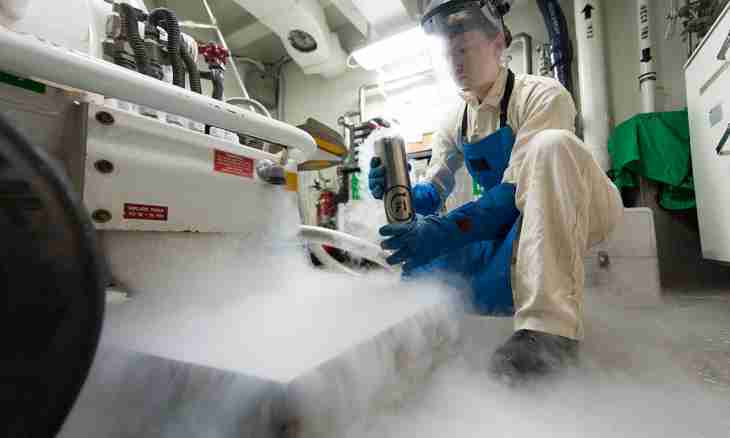Nitrogen is chemical element V of group of periodic Mendeleev's system, it represents flavourless colourless gas and taste. Nitrogen is one of the most widespread elements on Earth, its bulk is concentrated in the atmosphere.
Distribution in the nature
At air there are about 78.09% of free nitrogen on volume, on weight — 75.6% if not to consider insignificant impurity in the form of oxides and ammonia. On prevalence in the Solar system he takes the fourth place, following hydrogen, helium and oxygen.
In translation from Greek "nitrogen" means "the lifeless, not supporting life", in fact this chemical element is necessary for activity of organisms. Protein of animals and the person for 16-17% consists of nitrogen, it is formed due to consumption of the substances which are present at organisms of herbivores and at plants. In the nature constantly there takes place its circulation, the microorganisms capable to transform free nitrogen of air to connections which then are acquired by plants play a major role in it.
Physical and chemical properties
The molecule at nitrogen diatomic with threefold communication, its dissociation becomes noticeable only at very high temperatures. Nitrogen is lighter than air, in water this gas is less soluble, than oxygen. It is hardly liquefied, at the same time it has low critical temperature (-147 °C). This gas has very low reactionary ability which reason big energy of dissociation of a molecule is. Oxides of nitrogen are formed in air at atmospheric categories, also they can be received under the influence of ionizing radiation on nitrogen mix with oxygen. Nitrogen interacts when heating to rather low temperatures only with such active metals as calcium, magnesium and lithium, with the majority of other chemical elements it reacts at high temperature in the presence of catalysts. It does not interact with halogens, all halogenides of nitrogen can be received only by an indirect way, most of them are low-permanent connections.
Application
The most part of the received free nitrogen leaves on production of ammonia which then is processed into fertilizers, nitric acid and explosives. Nitrogen is applied as the inert environment at various metallurgical and chemical processes, it is used for pumping of combustible liquids and also for filling of free space in mercury thermometers. Liquid nitrogen finds the application in various refrigeration units as coolant. It is stored in steel vessels, and gaseous nitrogen — in cylinders.
